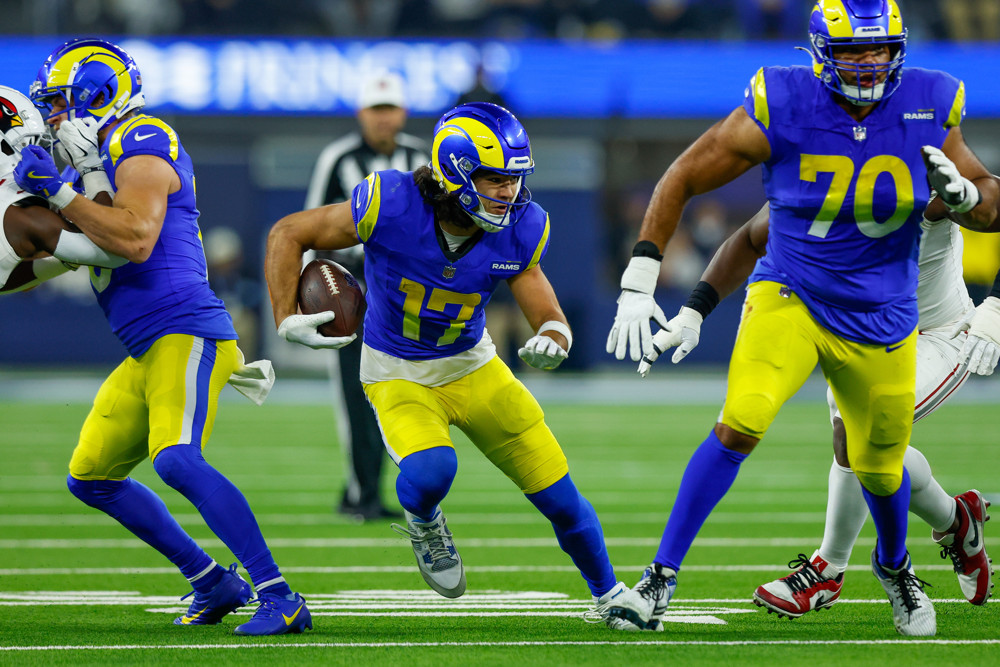Best-ball fantasy football strategies aside, people in and around sports generally consider consistency to be a virtue. You want a guy who comes to work every day with a lunch pail mentality and you know what you’re going to get day-in, day-out. That sort of thing.
There are benefits to players being consistent, to be sure. To take this idea to its logical extreme, if you knew exactly what every player on your team would do each game you could make much more effective roster decisions and game plans.
We wanted to take a look at whether there was a tangible on-field benefit to consistency, specifically in football. Are consistent players better than inconsistent ones?
But first, what does consistency look like?
Let’s start with a quick aside to show what different levels of consistency look like.
Here are two different seasons from generally-considered-inconsistent wide receiver Mike Williams. The first one (2019) actually was pretty consistent, and the other (2021) pretty inconsistent, with the overall production being quite similar (between 1,000 and 1,200 yards across 14-15 games).
 That Williams pulled off these two opposing seasons with similar production suggests that we might overvalue the concept of a consistent or inconsistent player, but we’ll get to that.
That Williams pulled off these two opposing seasons with similar production suggests that we might overvalue the concept of a consistent or inconsistent player, but we’ll get to that.
Is consistency good? A naive approach
When trying to value consistency, the first answer we arrive at is the opposite of what people might presume.
I took 8 years of Total Points data on NFL players, and analyzed players two ways:
- Full seasons (min. 12 games), for season-to-season projection
- First halves (min. 6 games), for In-season projection
In each case, I split players up by how much game-to-game variation they had in their Total Points. Those in the upper quartile were considered high-variance players, and the lower quartile considered low-variance.
I started just by looking at how productive those groups of players were overall, and what happened to each group in the following time period (year or half-year).
What I found was that higher-variance players were more productive on average than low-variance players. The plot below relates the season-to-season numbers, but the in-season phenomenon is the same.

There’s also an interesting finding, which we’ll return to. In the following time period, the players in those high and low variance groups regressed towards the middle in both average and variance, more so on the variance side of things. (The axes on the above chart are equal to make it easier to see this.)
What we seem to find is that inconsistency is correlated with productivity, and the gap in productivity between consistent and inconsistent players maintains itself over time more than the gap in consistency.
But there’s a problem: production is skewed positively. That is to say, players are more likely to have great games than terrible games, in large part because benches and backups exist. So a qualifying high-variance player is more likely to be good than bad, all else equal. And in terms of Total Points, a position like quarterback has both high variance and high production, which messes things up as well.
Is consistency good? A player-matching approach
Instead of just taking the overall average, we can take a more precise approach. We can pair up players at the same position with similar overall production but different variance profiles, and check how the consistent players perform compared to the inconsistent ones. This would strip out the aforementioned issues with positional differences, biased samples, etc.
To do this, I took the above sample of players and paired up those at the same position in the same season who had opposing variance profiles (upper quartile and lower quartile). From those candidate pairings, I took the pairings that were closest in terms of average Total Points production.
If consistency is valuable from an on-field perspective, we should see players with similar total production but more consistency outperform their inconsistent counterparts going forward. Which we… generally don’t.
Per-game Total Points changes year-over-year, 325 player pairs
| Avg Before | Avg After | Std Dev Before | Std Dev After | |
| Consistent | 1.4 | 1.5 | 1.1 | 1.7 |
| Inconsistent | 1.4 | 1.5 | 2.4 | 1.9 |
Per-game Total Points changes in-season, 547 player pairs
| Avg Before | Avg After | Std Dev Before | Std Dev After | |
| Consistent | 1.4 | 1.3 | 0.9 | 1.5 |
| Inconsistent | 1.4 | 1.5 | 2.5 | 1.8 |
There isn’t a meaningful difference in the players’ overall production between previously-consistent and previously-inconsistent players. There’s a small difference when comparing in-season production, but it’s not practically significant. A gap of 0.2 points per game is equivalent to a field goal over the course of a full season.
Bundling all the positions together to come up with these averages can be a bit fraught, especially considering quarterback value is so different from other positions. If we look position-by-position we do see some suggestion that pass-catching positions (WR and TE) benefit from inconsistency, to the tune of close to a half-point per game (regardless of which type of time frame we look at). But then we’re talking about just a few dozen pairings of players, so it’s not a very robust finding.
We also see a continuation of the phenomenon from above, where the consistency level that we observe in one time period mostly disappears by the next one. Turns out even consistency isn’t very consistent.
I’m still of the opinion that there are types of consistency—in effort, in demeanor—that are somewhat reliable and can offer some value. But I don’t have any evidence that consistency in on-field production is either reliable or valuable.
Maybe Oscar Wilde was right when he said, “Consistency is the last refuge of the unimaginative.”

